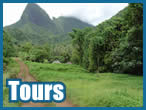

 |
|
|
|
There isn't one anymore. The main game back in 2003
was to be the youngest person to circumnavigate the globe on a motorbike and linking up the seven natural wonders of the world by land and sea. I've seen five. Two left. I'l get to them some day soon.
To the left is a rough
idea of where I thought I was going to go.. To see exactly where I went click here.
The dream is in the journey, the people,
the experiences and pleasure of travelling the world
like they did back before Ghengis Khan. Except I've
got an engine. And rubber.
|
 |
Below are the first four natural wonders I visited.. If you would like to see what the rest of the natural
wonders are click here.
To view the man-made wonders
I visited on the Oz2A trip
click here.
|
 |

This section outlines the seven natural wonders
of our world.
I intend to visit and conquer each one some day. Which may involve
swimming it, climbing, diving it, crossing it or just seeing it
(Northern Lights). The one I am going to have trouble conquering
is Mt Everest. But you never know. Maybe I will find someone willing
to let me climb into their backpack with breathing apparatus, an
ipod and some munchies. Have to wait and see.
First four done. Three to go.
Natural Wonders Completed
 |

|
Harbour
of Rio de Janeiro (Brazil)
The city of Rio de Janeiro
on the east coast of Brazil hugs the steep hillsides that
meet the magnificent Guanabara Bay and Atlantic Ocean. |
 |
 |

|
Paricutin
Volcano (Paricutin, Mexico)
It's not everyday that
a volcanologist gets to watch the birth, growth, and death
of a volcano. Paricutin provided such an opportunity. The
eruption that created Paricutin began in 1943 and continued
to 1952.
Most of the explosive activity was during the first year of
the eruption when the cone grew to 336m. The cone continued
to grow for another 8 years but added only another 88m. Effusive
activity began on the second day and continued to the end
of the eruption.
Lava flows covered about 25 square kms and had a volume of
about 1.4 cubic km. The rate of eruption declined steadily
until the last 6 months of the eruption when violent explosions
were frequent and violent. No one was killed by lava or ash. |
 |
 |

|
The
Grand Canyon (Arizona, USA)
Measuring up to 29 kms
across - rim to rim, with an average width of 16 kms and an
average depth of 1600m, the Grand Canyon of the Colorado River
is the largest gorge in the world.
The Grand Canyon is a 464-km-long gash across the face of
the Colorado Plateau in northern Arizona.
Within this Delaware-size area of eroded rock rise mountains
higher than any in the eastern United States.
Millions of years of erosion created the Grand Canyon, the
Colorado and its tributaries slowly etched their way through
rocks over a billion years old to create broad stripes and
leave a record of the canyon's geologic history in its cliff
walls.
At the canyon's bottom, a mile below the rim, the Colorado
River slices through Granite Gorge, exposing some of the oldest
rocks visible anywhere on the earth. Nearly two billion years
old. Ten distinct layers of sandstone, limestone, and shale
reveal the advance and retreat of ancient seas, the building
up and wearing down of mountains and the meandering of rivers
over 600 million years.
The Grand Canyon is not only a slice of North America's geologic
history but also a cross section of ecozones. Between rim
and river, travelers find the same variety of ecological regions
they would encounter on a trip from Canada to Mexico.
About five million people now visit the canyon each year by
car, on foot, atop mules, on motorized rafts, and in helicopters
(and on motorbikes!) |
 |
 |

|
The
Northern Lights (The Arctic Circle)
The Northern Lights,
also known as auroras, are mostly witnessed at night and visible
best in the high northerly latitudes such as Alaska and Sweden.
Auroras are caused when the sun gives off high energy particles
(ions) that travel out to space at speeds of 300 - 1,200 kms
per second. A cloud of these particles is called a plasma.
The stream of plasma coming from the sun is called the solar
wind. These solar winds interact with the magnetic field of
the earth and some become trapped in the earth's ionosphere.
When the particles collide with gases in the ionosphere, they
begin to glow.
What can dramatically change the oval are the occasional spikes
in solar activity that turn the solar wind into a raging hurricane.
Then, for a few days, the auroral oval flows toward the Equator
and treats sky-gazers as far south as Mexico to midnight extravaganzas. |
 |
Natural Wonders still to complete..
 |

|
Victoria
Falls (Zambia/Zimbabwe, Africa)
One of the greatest
waterfalls in the world lies on the Zimbezi River, separating
the two countries - Zambia and Zimbabwe.
The falls were formed by a deep rift in the rock that lies
directly across the path of the Zimbezi River. The rift was
caused by movement of the earth about 150 million years ago.
At the broadest point, the falls are nearly 1900m across.
You can see Victoria Falls from as far as 40 kms away, and
see its spray rising over 300m into the air from eleven kms
away!
The height of the falls varies from 85m to about 120m in the
center.
Victoria falls was discovered by David Livingstone in 1855
and was named in honour of Queen Victoria. Since their discovery
the number of foreign visitors rose steadily and have continued
ever since. |
 |
 |

|
Mt.
Everest (Nepal/Tibet)
Mount Everest is the
tallest mountain in the world. It is part of the Himalayan
Mountains and sits on the border between Nepal and Tibet.
Roughly 60 million years ago, India, then a separate continent,
began to move rapidly northward, eventually colliding with
Asia. The push crushed the land on the continental shores
into what is now the highest mountain range in the world -
the Himalayas.
The entire range of magnificent snow-covered peaks is a natural
wonder on it's own -- but Everest stands above the others
quite literally. Everest is currently 29, 107 feet (8,800
meters) tall, but is growing at a rate of 2 inches per year.
New Zealander Edmund Hillary and Sherpa Tenzing Norgay reached
the pinnacle on May 29, 1953, the first recorded men to march
over the frozen ridges and stand on the highest point
in the world. |
 |
 |

|
The
Great Barrier Reef (Queensland, Australia)
The Great Barrier Reef,
which sweeps along the northeast coast of Australia, is the
world's longest-spanning natural wonder (not including the
auroras). The 2,000 km reef is ironically the most fragile
and is made up of the skeletons of generations of marine polyps
that lived and died just under the surface of the crystal
clear sea.
Pollution, climate change and human intrusion are some of
the factors endangering the delicate lime-based coral that
covers about 344,000 square kms, often as close as 50 kms
from shore.
The reef, home to the current generations of polyps, is also
inhabited by a diverse and varied array of colourful and exotic
species of marine life. Nearly microscopic fish co-exist with
much larger whale sharks, countless shellfish and other fanciful
creatures. |
 |
Return
to top...

 People have been arguing for years about which
man-made wonders qualify for the top 7 and to this day there is
still no 'official' list. To avoid any disputes
I have decided to make a list of my own known as 'The LOT' There are a total of 26 man-made wonders which made it into 'The
LOT and they are all listed below.
Man Man Wonders Complete
South America
People have been arguing for years about which
man-made wonders qualify for the top 7 and to this day there is
still no 'official' list. To avoid any disputes
I have decided to make a list of my own known as 'The LOT' There are a total of 26 man-made wonders which made it into 'The
LOT and they are all listed below.
Man Man Wonders Complete
South America
 |

|
The Easter Island
Statues, Pacific Ocean, Chile |
 |
 |
 |
The Statue of Cristo
Redentor, Rio De Janeiro, Brazil |
 |
 |
 |
The Inca city of Machu
Picchu, Peru |
 |
Central America
 |
 |
The Panama Canal,
Panama City, Panama |
 |
 |
 |
The Mayan City of
Tikal, Guatemala |
 |
North America
Man Made Wonders still to complete
Europe
 |
 |
 |
 |
 |
| The Colosseum |
Leaning Tower of Pisa |
The Parthenon |
Chartres Cathedral |
 |
 |
 |
 |
 |
 |
| The Clock Tower
- Big Ben |
The Eiffel Tower |
Mont-Saint-Michel |
Stonehenge |
 |
The Middle East
 |
 |
 |
|
|
Petra, the rock-carved
city
|
The Throne Hall
of Persepolis |
|
|
 |
Africa
 |
 |
 |
 |
|
The Suez Canal
|
The Pyramids
at Giza |
Abu Simbel Temple
|
|
 |
Asia
 |
 |
 |
 |
 |
The Great Wall Of China
|
The Petronas Towers |
Angkor Wat |
Borobudur Temple |
 |
 |
 |
 |
|
|
The Shwedagon
Pagoda
|
The Taj Mahal |
|
|
 |
Australia
 |
 |
By
the time I arrive here, This is where I will stay. |
|
The
Sydney Opera House
|
 |
Return
to top...
|
|
|








































